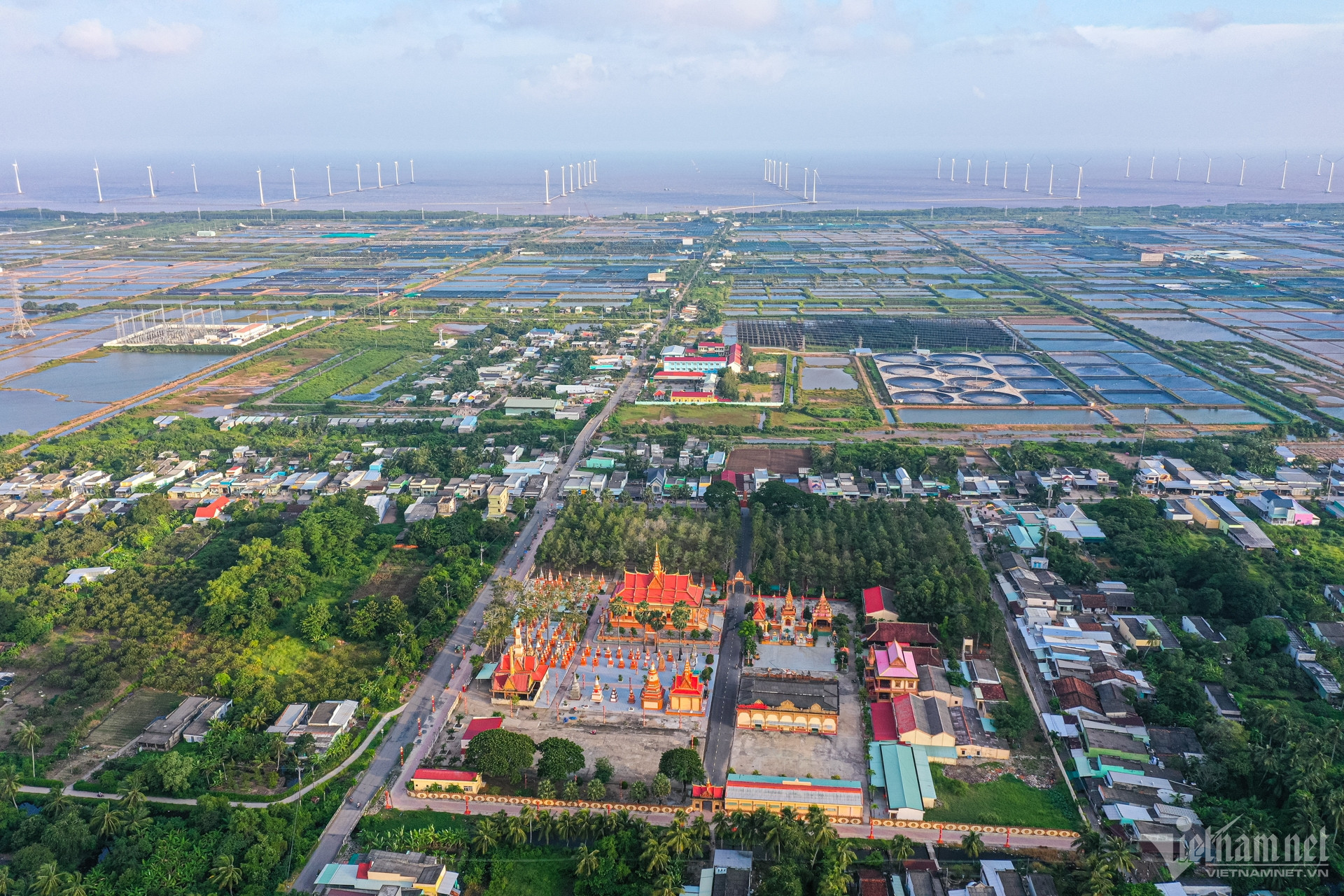
Located in Vinh Trach Dong commune, about 3km from the Bac Lieu wind farm and 12km from the city center, Xiem Can Temple occupies an area of approximately 5 hectares. It is renowned as one of the oldest and most important Khmer temples in the Mekong Delta region.
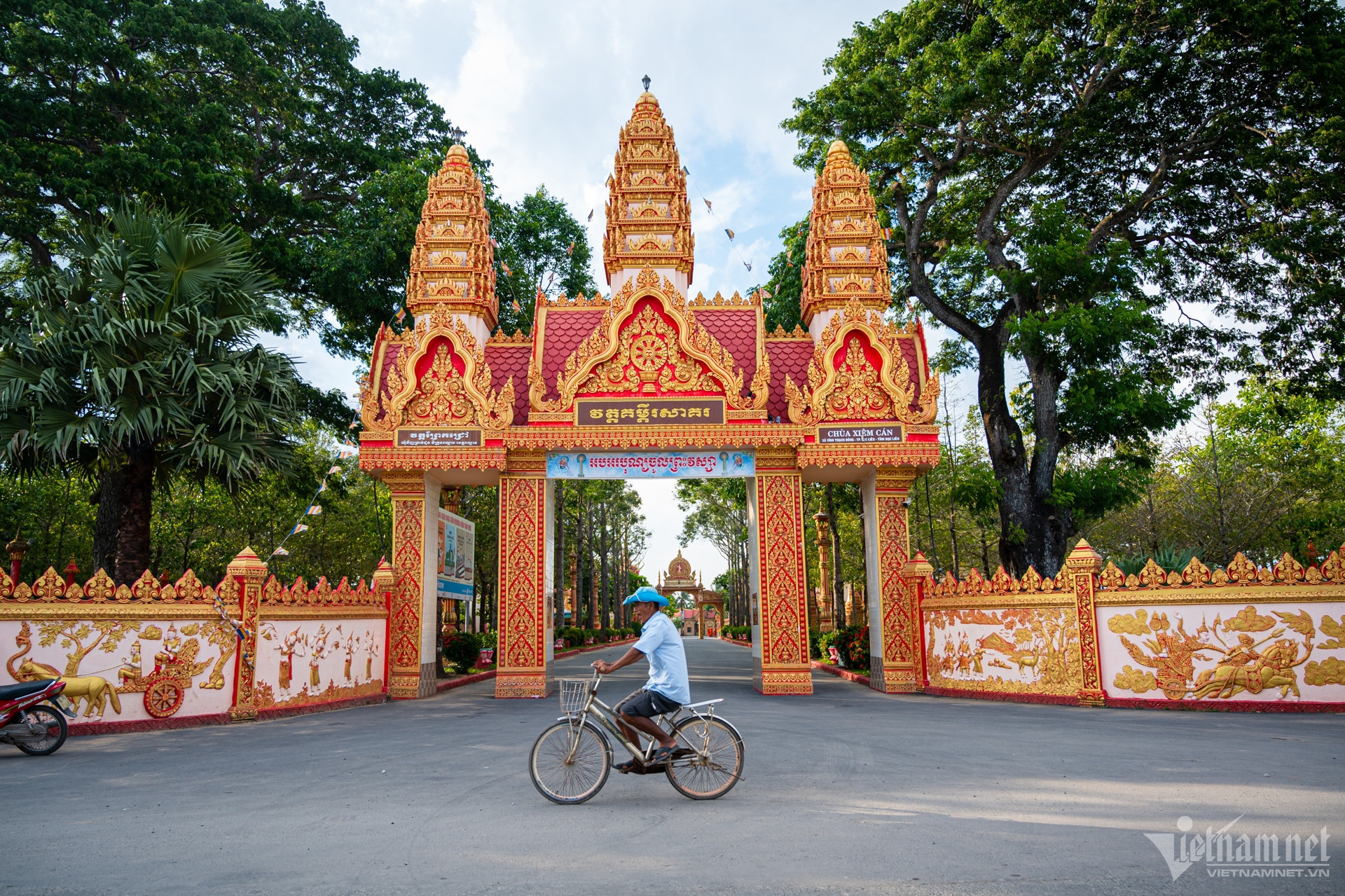
Known as an ancient pagoda and a major religious center for the Khmer people in Bac Lieu and the Mekong Delta, Xiem Can Temple was recognized as a prominent tourist site in the Mekong Delta in 2022.
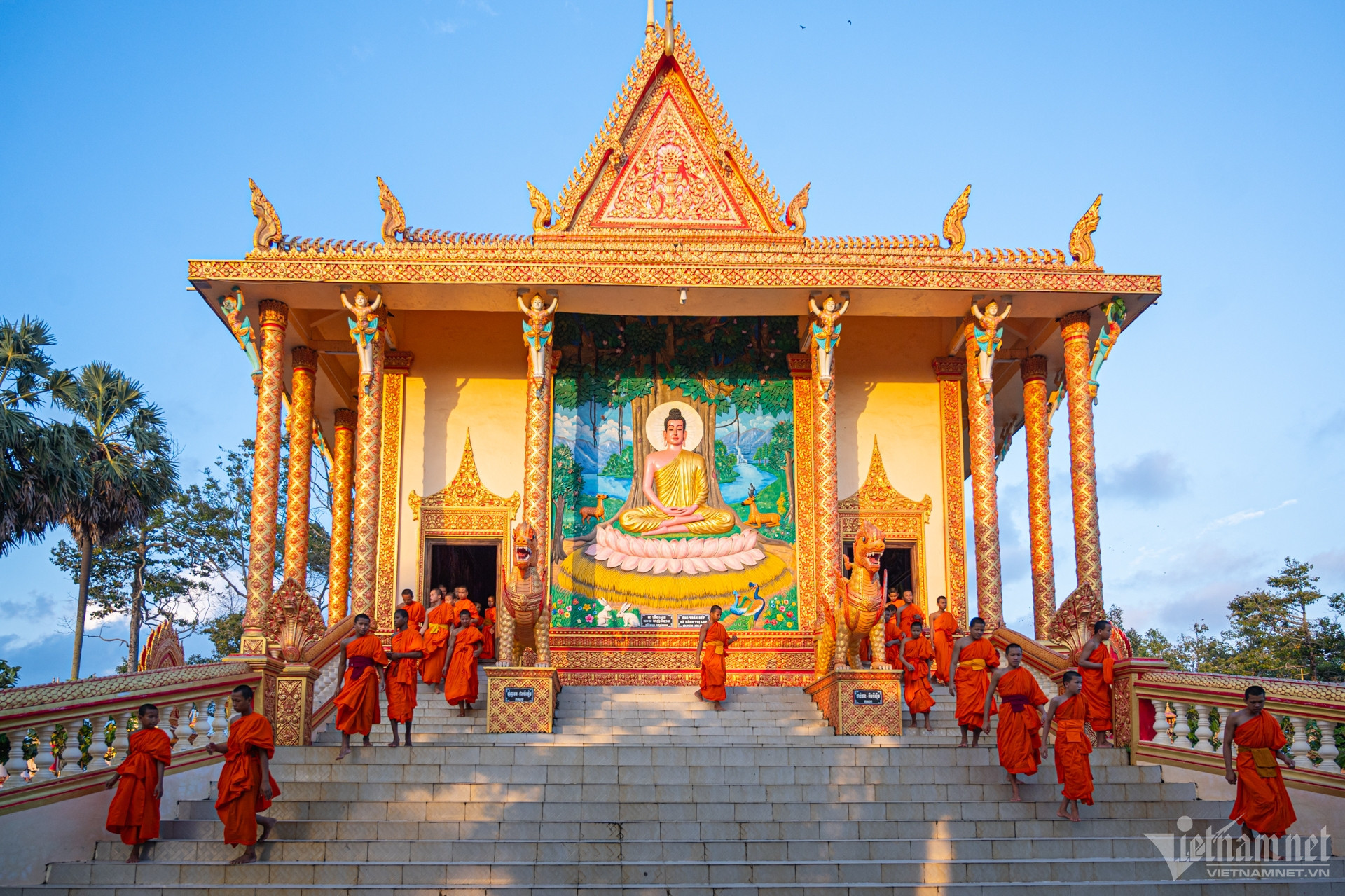
The temple complex includes several structures oriented towards the east, constructed in the Theravada Buddhist tradition while heavily influenced by Angkor Khmer architecture. The main hall, designed in a rectangular shape, features a prominent entrance with 18 steps leading up to a bas-relief of Buddha.
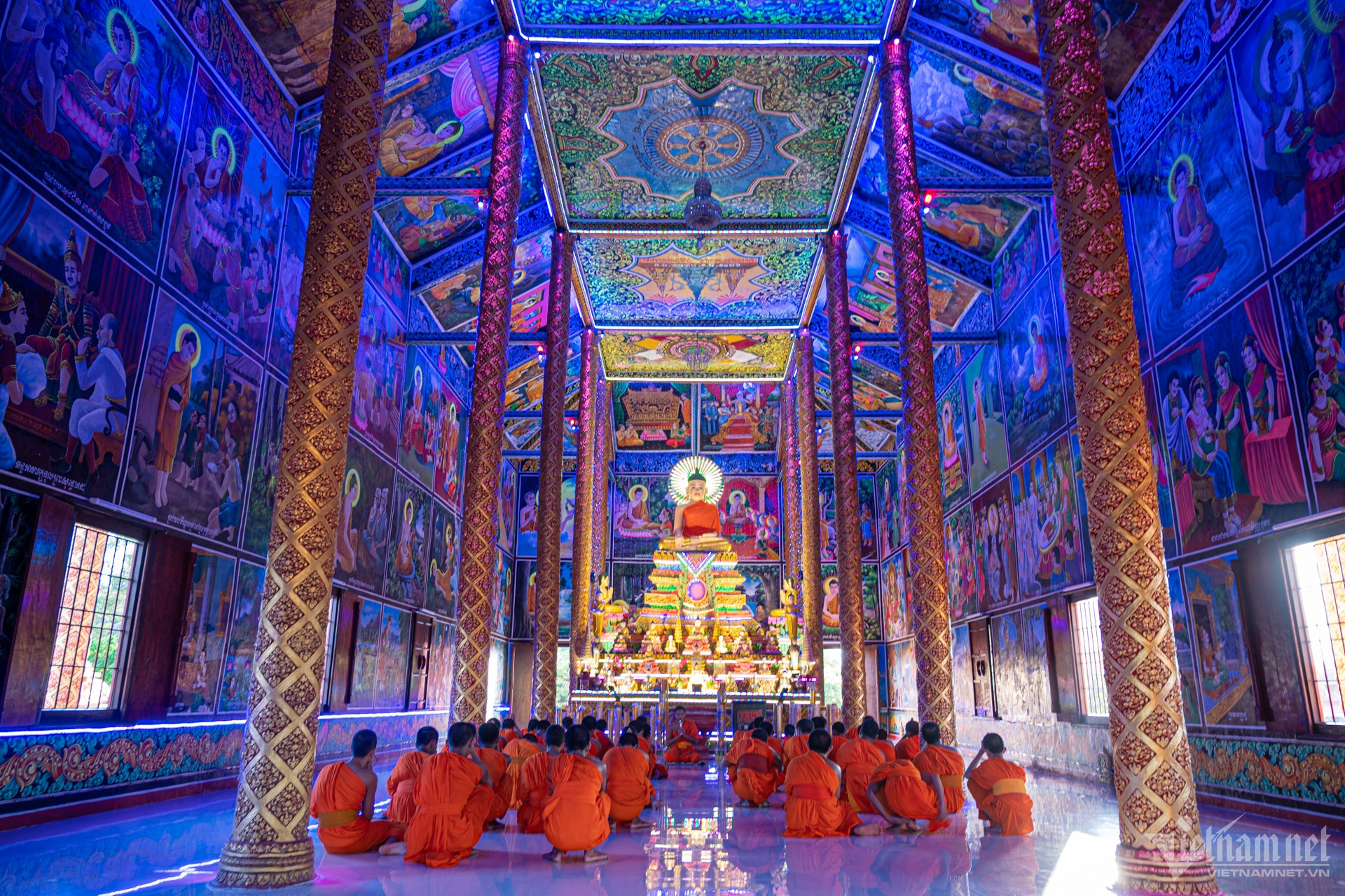
Inside the main hall, vibrant murals depict the life of Buddha, contributing to the temple's unique artistic value.
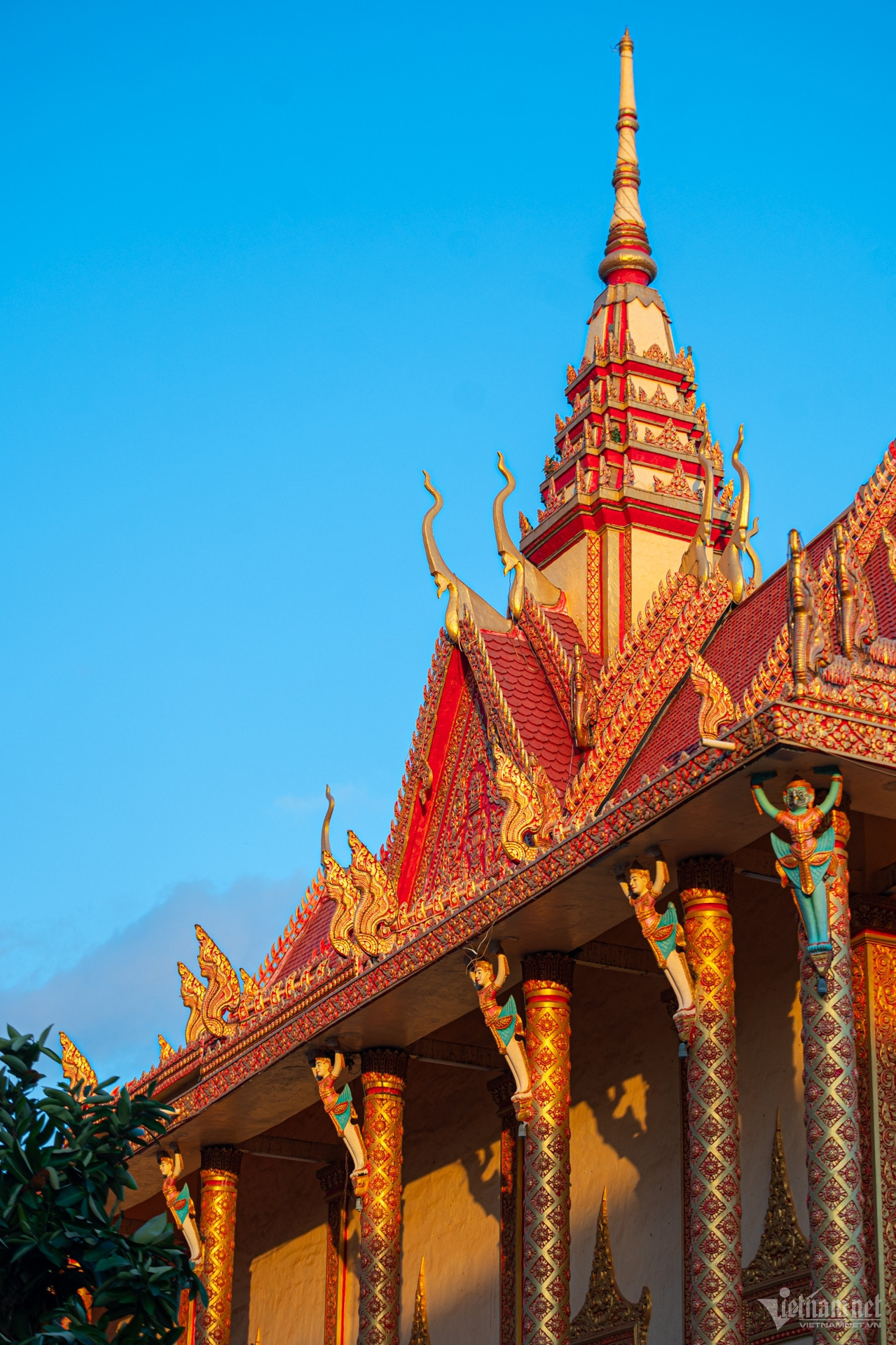
The multi-layered roof structure creates a lofty space, culminating in a pointed spire, characteristic of Angkor temple architecture.
The roofing system is harmoniously designed with Khmer-style dragon statues, double dragon heads, and undulating dragon tails. Each roof and column section is adorned with meticulous carvings, including representations of Khmer dragons, the naga serpent, and the mythical bird Krud.

The name Xiem Can derives from the Teochew Chinese dialect, meaning "near the water," reflecting the temple's historical location by the coastal plains.
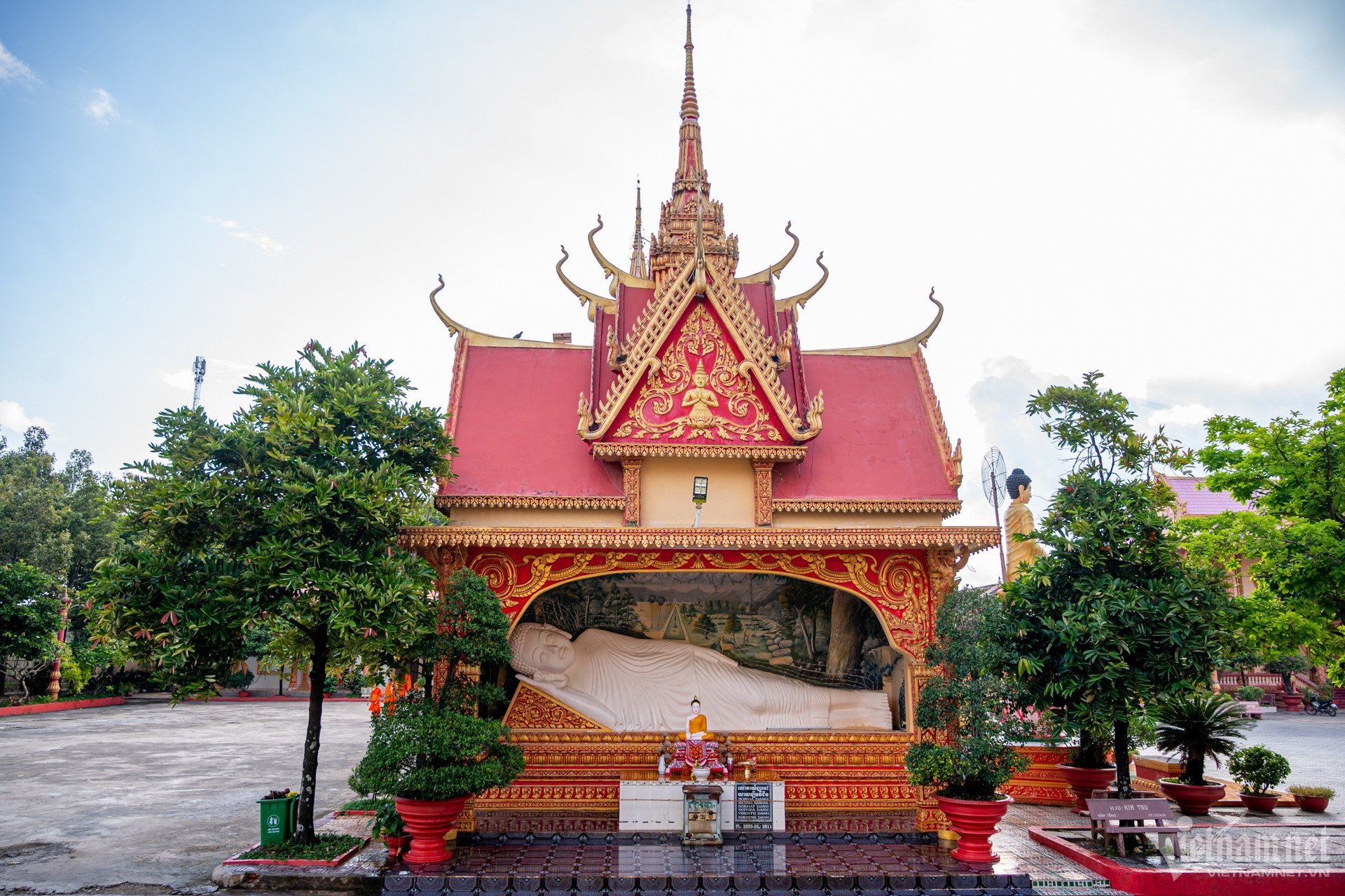
The temple grounds include three main stupas and numerous Buddha statues in various meditative poses. Among these are over 100 statues representing the incarnations of Buddha, an ancient Khmer inscription, and a bronze bell dating back to 1887.
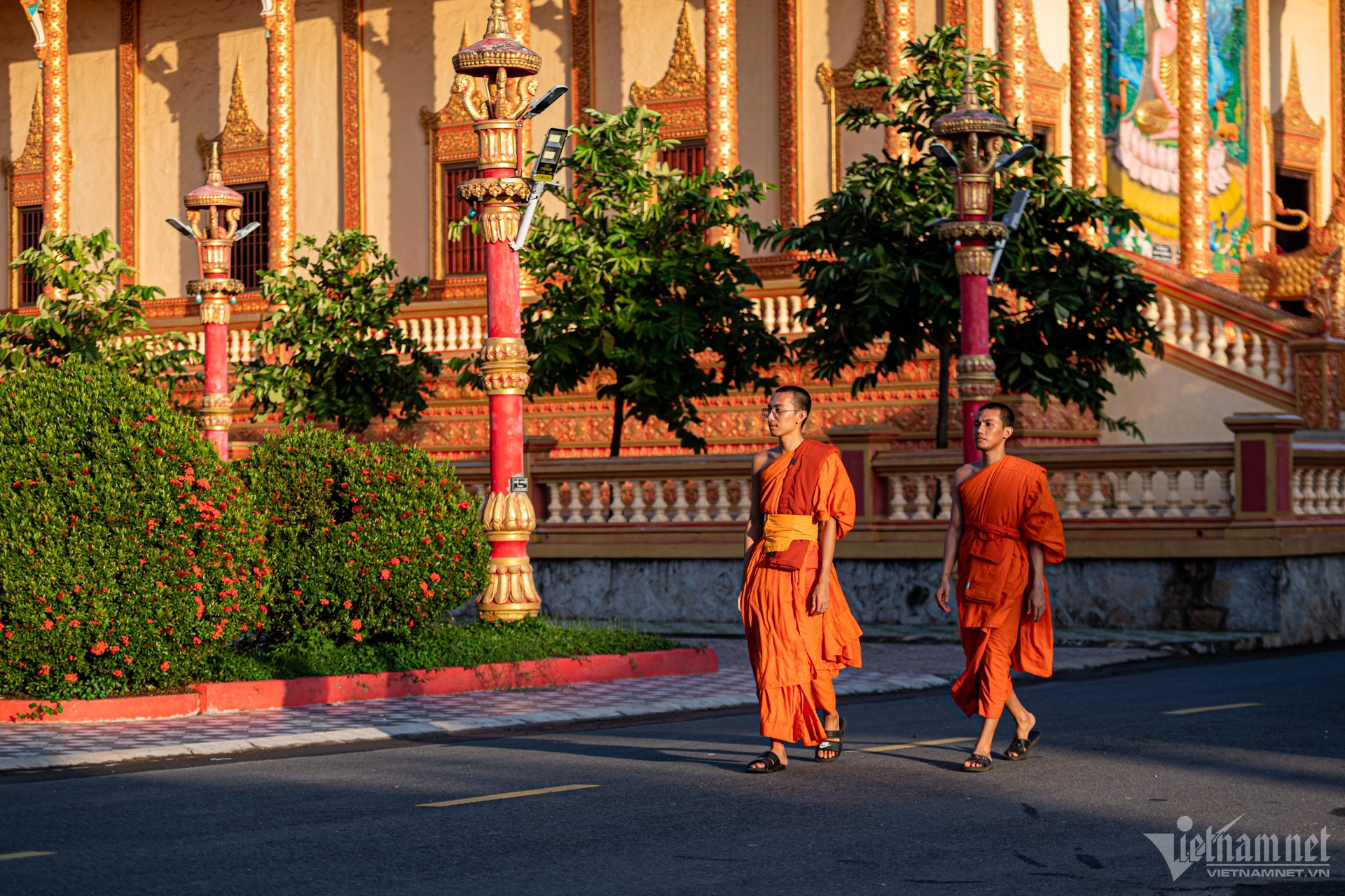
Xiem Can Temple serves as a center for religious practice, education, and cultural activities for the local Khmer community. It is a place where monks study, and residents learn traditional dances, crafts, and languages. The best times to visit are early morning or late afternoon to experience the temple's serene beauty and observe the daily life of the monks.
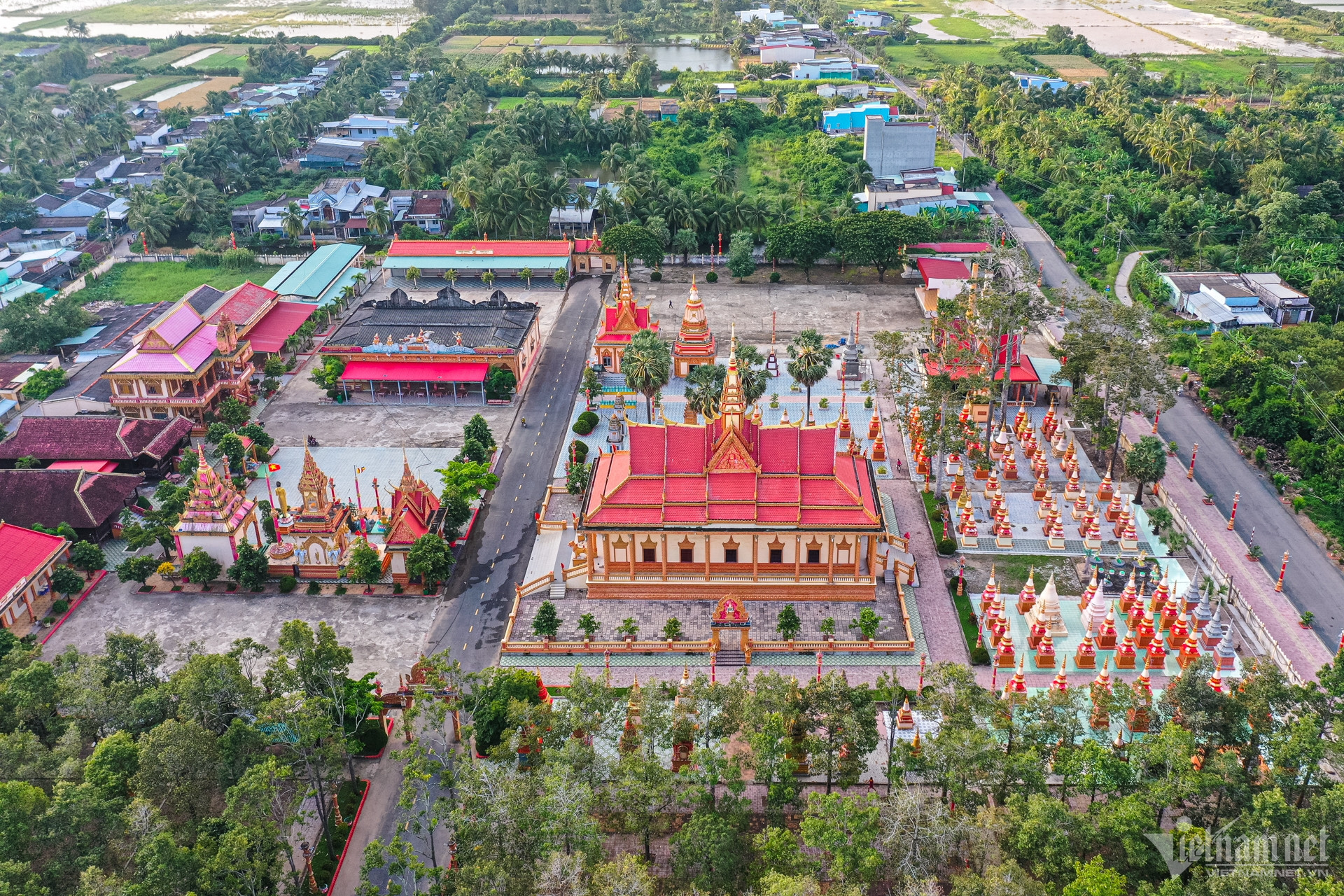
The temple's surroundings offer a peaceful and cool atmosphere, with ancient trees providing shade and tranquility. The expansive grounds and historic trees, such as palms and centuries-old dipterocarpus trees, add to the temple's serene and timeless ambiance.
Nguyen Hue